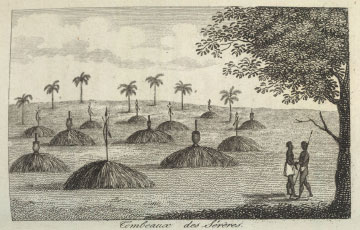West Africa

Much of the African continent north and west of the Bight of Biafra and south of the Sahara can be identified as West Africa. European traders often defined West Africa more narrowly as the area from Senegambia in the north to the Bight of Benin in the south. By either definition, the region displays significant geographic and cultural diversity.
West Africa includes several different climate regions, from tropical forest in the coastal west and south to savannah, sahel, and desert as one moves north. Each of these supported different kinds of agricultural and social organization. In the savannah and sahel west of the Niger Inland Delta, the great empires of Ghana, Mali, and Songhai grew to control vast areas of territory. The empires of Mali and Songhai were both nominally Muslim and both helped to spread Islam across the region.
African political and military organization, along with disease, generally confined Europeans to the coast from the fifteenth through nineteenth centuries. Early European traders bought and sold gold, ivory, wood, cloth, food, and alcohol at various places across the region. Over time, a small commerce in captive Africans grew to encompass the largest forced migration in human history.
Once sugar and other export crops began to be cultivated in the Americas, nearly every Western European country participated in the transatlantic slave trade. To secure full cargoes, European traders built castles or factories at ports on the coast where they could collect people and goods for sale. These sites—places like Gorée, Cape Coast Castle, and Ouidah—often became launching points for European colonization. In order to help ensure a steady supply of captives from the interior, slave traders began to add guns and other weapons to their portfolio of goods for sale.
Over the course of more than three and a half centuries, West Africa exported about half of the roughly 12.5 million Africans who entered the Atlantic. The warfare, disruption, underdevelopment, and population decline resulting from the slave trade had a profound impact on West Africa. As the turn of the twentieth century approached, Europeans became better able to penetrate the interior and quickly engaged in efforts to colonize the continent. This "Scramble for Africa" installed the French and British as the primary colonizers in the region. Until the start of successful anti-colonial independence movements after the Second World War, Liberia was the sole independent nation in the region.






